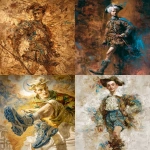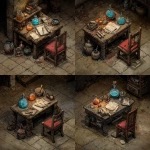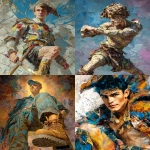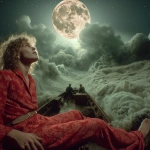Explore the Best AI Image Gallery
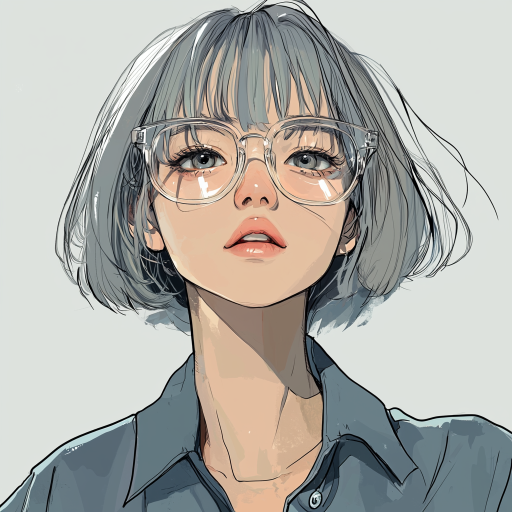
Imagining the Future: The Role of AI-Generated Images in Modern Art
The rise of artificial intelligence (AI) has ushered in a new era in various sectors, and the creative arts are no exception. AI-generated images are rapidly gaining traction, attracting attention from artists, designers, and marketers alike. This post delves into the multifaceted impact of AI-generated images on the creative industry, examines potential uses, addresses ethical considerations, and forecasts future trends.
The Impact of AI on Creativity
One of the most significant aspects of AI-generated art is its ability to augment human creativity. Rather than replacing artists, AI can serve as a tool that enhances their capabilities. For instance, artists can use generative adversarial networks (GANs) to create unique visuals, enabling them to explore new styles and themes that may have been previously inaccessible. Tools such as DALL-E and Midjourney allow creators to input prompts and, in response, generate images that reflect those ideas in surprising and often intricate ways.
Applications in Various Sectors
AI-generated images have potential applications across a range of industries:
- Art and Design: Artists can leverage AI to experiment with styles and concepts, creating works that often blend human intuition with machine learning.
- Marketing and Advertising: Marketers can harness AI to produce unique visuals tailored to specific audiences, thus enhancing brand storytelling.
- Gaming: Game developers can utilize AI to create expansive, immersive environments and characters that adapt based on player interactions.
- Fashion: AI can help predict trends by analyzing data and generating designs that resonate with consumers.
- Film and Animation: Filmmakers are increasingly employing AI to generate visual effects or conceptualize scenes, saving both time and resources.
Ethical Considerations
While the integration of AI in art and creativity offers many benefits, it also raises ethical questions that merit discussion. A key concern is the authorship of AI-generated work. Who owns the rights to an image created by an algorithm? As artists incorporate AI tools into their workflow, the lines between human and machine-generated contributions blur.
Additionally, there is the issue of originality. If an AI-generated image is based on previously existing works, does it dilute the concept of originality in art? Artists and intellectual property lawyers are increasingly grappling with these questions as the technology evolves.
Another ethical dilemma centers around misinformation. With the capability to create hyper-realistic images, there is potential for AI-generated visuals to be manipulated for fake news or misleading representations. Consequently, there is a growing call for standards and regulations governing the use of AI in creating images.
Future Trends
As technology continues to advance, the future of AI-generated images in art is bright, yet complex. Here are some trends to watch:
- Collaboration between Artists and AI: We can expect to see more collaborative efforts where artists and AI work together to produce unique pieces, blurring the line between the creator and the tool.
- AI as a Learning Tool: Educational institutions may start integrating AI into their art programs, allowing students to learn how to effectively use these tools to enhance their artistry.
- Ethics and Regulation: As the use of AI in art grows, so will the need for clearer guidelines and regulations regarding authorship, copyright, and ethical use.
- Increased Accessibility: AI-generated art tools are becoming more user-friendly, making creative expression accessible to individuals without traditional artistic skills.
- Community-Driven Initiatives: Platforms that democratize the creation of AI art may emerge, allowing artists from diverse backgrounds to share their unique perspectives and works.
Conclusion
AI-generated images are not just a passing trend; they represent a transformative shift in the way we perceive and create art. While there are challenges and ethical questions to navigate, the potential for enhancing creativity and providing new avenues of expression is vast. As artists continue to engage with AI technologies, we are likely to witness a new renaissance in art that redefines creativity for generations to come.

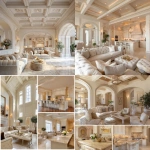
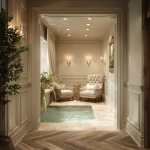
](https://images.ai-img.art/thumbnails/150/3a60737a5b67fa252207ad1ae6db245a26284f53fb5846996bb34515b39ff269.webp)
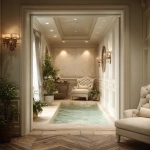
](https://images.ai-img.art/thumbnails/150/1614d64dd7156c95db952258978be809eb3db8cea4453fec69c49cbdfe63fa94.webp)
](https://images.ai-img.art/thumbnails/150/8c3bd422d50d35735d8fb33bd314a79e30e5b150129d5d09bdad822a2007593f.webp)
